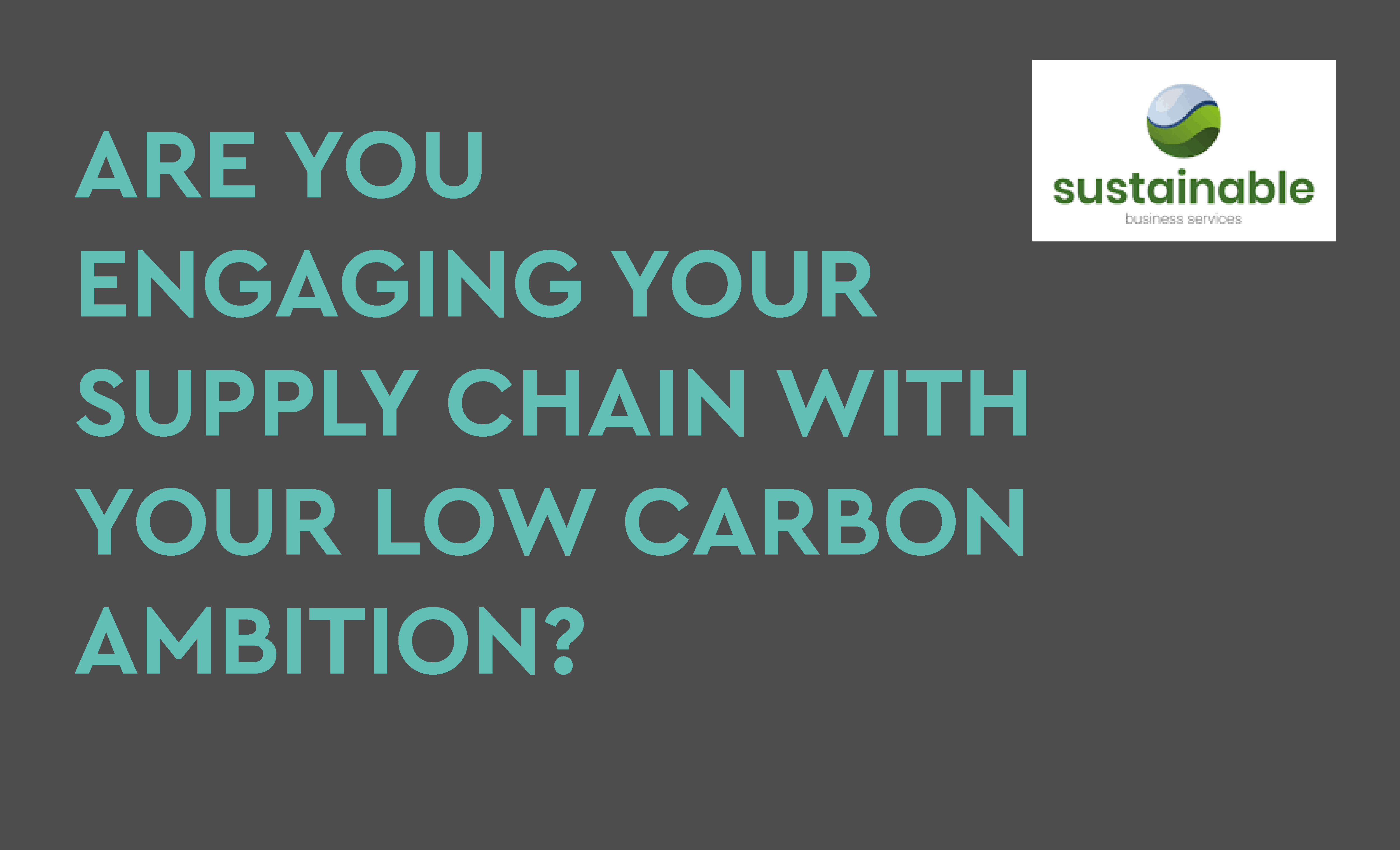Guest blog by Sustainable Business Services
The environment is a major area of concern for companies. Governments and consumers alike are looking for sustainable solutions. The carbon impact of supply chains is often overlooked, but it’s an important factor in reducing your organization’s overall footprint on the environment. Scope 3 emissions including upstream and downstream value chain can account for up to 70% of a businesses overall footprint so engaging with your suppliers will be essential to achieving your ambition.
1. Local sourcing
Local sourcing can help you meet your carbon reduction goals by reducing the distance goods need to travel, and therefore lower fuel consumption. It’s also a good way to build your brand, as consumers feel more connected with companies that give back to their local communities. Local sourcing can also be a good way for you to build relationships with suppliers, allowing for greater flexibility around pricing and product availability. Finally, it allows you to better understand the needs of your customers, which will help you develop products that meet those needs in an efficient way
2. Sustainable transport
As a small business owner with orders to fulfill, the environmental impact of your logistics probably isn’t a top priority. Transport is responsible for 27% of the UK’s Greenhouse Gas emissions.
Taking this one step further and using the data from your couriers or using organisations to help you calculate the carbon emissions associated to your deliveries, can form a great way to communicate your commitment to reducing your impact to your clients.
Their is a big push in the distribution space now in electric vehicles and last mile solutions to reduce your impact – do your research their are companies that can support your ambition.
When you have done all that you can and you understand the remaining emissions associated to delivering your products, offsetting can form part of your narrative and want to go further.
3. Reduce, re-use recycle and the circular economy
As more and more consumers are looking for brands that align to their own sustainability goals and ambition, its all well and good talking about the sustainability of your product or business, but when it arrives in an oversized non recycled or recyclable package any trust can be thrown out of the window. The concept of “cradle-to-cradle” — taking responsibility for a product’s impact from the sourcing of the materials to its ultimate disposal — is also becoming increasingly popular. The cradle-to-cradle concept needs to take into account the shipping of a product from the producer, through to the retailer, and onto the consumer – a process which often involves significant quantities of expensive packaging materials.
Their are now may solutions that can suit your business or products
Is it needed? Can you eliminate the packaging all together, if not can the size be reduced?
- Can you offer a return of refill solution
- Recycled Cardboard and paper
- Biodegradable packaging solutions
- New materials are being used and tested from mushroom to seaweed, check out your industry news or speak to your supplier about new materials.
- Can you offer a return of refill solution
- Recycled Cardboard and paper
- Biodegradable packaging solutions
- New materials are being used and tested from mushroom to seaweed, check out your industry news or speak to your supplier about new materials.
4. Do you check the environmental policy of your suppliers?
It’s a good idea to check that your suppliers have an environmental policy. It is a key part of sustainable supply chain management, so make sure it is clear and open about their commitments, ambitions and challenges. Do they publish their own net-zero date or are they waiting until 2050 or later? Is their approach open and honest, or do they hide behind vague statements like ‘we’re working towards zero’? What specific targets do they have set out?
Monitor, measure and report on their progress against these targets by:
- reviewing relevant publicly available information such as annual reports;
- meeting with senior management where possible;
- how are they performing against targets
Companies that embed low carbon sustainable values throughout their supply chain are more likely to survive in the future world economy. The need for companies to embed low carbon values throughout their supply chain has never been greater.
Companies now recognize they have a responsibility not just to their customers and shareholders, but also to those whose livelihoods depend on the company’s success. This includes the employees who work for them, as well as those who produce goods or provide services from whom they buy. Achieving this means embedding sustainability into everything companies do – from designing products responsibly through using renewable energy in manufacturing facilities, through working with suppliers who share similar values of environmental stewardship and social responsibility; right down to how waste is managed at all levels within an organization.
Sustainable businesses are often more profitable, investable and prepared for future legislative changes.
We’ve seen how companies can use their supply chains to achieve their low carbon ambitions. The benefits of local sourcing, sustainable transport and recycling are clear, but they don’t stop there. We believe that this approach is likely to be more successful in the future world economy as well – where sustainability will be an increasingly important factor in consumers’ minds when making purchasing decisions.







